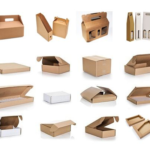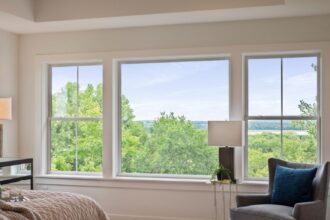Your roof is one of the most critical components of your home. It protects you, your loved ones, and your belongings from the elements. However, like any part of your house, it’s prone to wear and tear over time. From minor leaks to more significant structural damage, roofing issues can range from inconvenient to potentially disastrous if left unaddressed.
1. Leaks and Shingle Damage
Leaks often stem from damaged shingles, cracked flashing, or poor installation, leading to water infiltration and potential structural damage. Regular inspection for missing or broken shingles and signs of water entry, coupled with prompt repairs, can help prevent leaks from escalating into more significant problems. If you reside in Tennessee, engaging a Clarksville roofing contractor can offer expert solutions for all your roofing damage, ensuring the safety and longevity of your home. Shingle damage, caused by exposure to harsh weather conditions, compromises the roof’s integrity and can lead to leaks if left unaddressed.
2. Poor Ventilation
Inadequate ventilation can lead to a host of problems, including heat and moisture buildup in your attic, which can cause shingles to deteriorate prematurely and increase energy costs. To improve ventilation, consider installing ridge vents, soffit vents, or attic fans to promote airflow and regulate temperature and humidity levels. Proper ventilation not only extends the lifespan of your roof but also enhances energy efficiency and indoor comfort.
Consequences of Poor Ventilation
Without proper airflow, excess heat and moisture can accumulate, creating an environment ripe for mold and mildew growth. This not only compromises the structural integrity of your roof but also poses health risks to you and your family. Furthermore, poor ventilation can cause your HVAC system to work harder to maintain comfortable temperatures, leading to higher energy bills and premature system failure.
Signs of Poor Ventilation
Several signs indicate your attic may be poorly ventilated. These include excessive heat buildup in the summer, condensation on windows, musty odors, and visible signs of mold or mildew growth. Additionally, if you notice your shingles deteriorating prematurely or ice dams forming in the winter, it could be a sign of inadequate ventilation. Pay attention to these warning signs and address ventilation issues promptly to prevent further damage and improve indoor air quality.
Improving Ventilation
Improving ventilation in your attic is relatively straightforward and can yield significant benefits. Start by assessing your current ventilation system and identifying any areas that need improvement. Consider installing additional vents, such as ridge vents, soffit vents, or gable vents, to promote airflow and regulate temperature and humidity levels. Additionally, adding an attic fan can help exhaust hot air and moisture, especially during the summer months.
3. Ice Dams
Ice dams form when snow melts on your roof and refreezes at the eaves, creating a barrier that prevents proper drainage. This can lead to water backing up under the shingles and causing leaks and water damage inside your home. To prevent ice dams, ensure your attic is well-insulated and ventilated to maintain a consistent temperature on your roof. Additionally, use a roof rake to remove excess snow buildup after heavy snowfalls, especially near the eaves.
4. Tree Damage
Overhanging branches can pose a threat to your roof, especially during storms when strong winds can cause them to break and fall onto your home. To mitigate the risk of tree damage, trim back any branches that overhang your roof and remove dead or diseased trees altogether. Regular tree maintenance not only protects your roof but also enhances the curb appeal and safety of your property.
5. Flashing Issues
Flashing is used to seal joints and transitions on your roof, such as around chimneys, vents, and skylights. Over time, flashing can become loose, corroded, or damaged, allowing water to penetrate your roof and cause leaks. To address flashing issues, inspect these areas regularly for any signs of damage or deterioration. Replace worn or damaged flashing and ensure it is properly sealed to prevent water infiltration and maintain the integrity of your roof.
6. Moss and Algae Growth
While they may seem harmless at first, moss and algae can retain moisture and accelerate the deterioration of your shingles, leading to premature aging and eventual water infiltration. To combat moss and algae growth, trim back overhanging branches to allow more sunlight onto your roof and improve airflow. Additionally, you can install zinc or copper strips along the ridges of your roof, which release ions that inhibit the growth of moss and algae over time.
Maintaining a healthy roof is essential for protecting your home and ensuring your family’s safety and comfort. By addressing common roofing issues promptly and implementing preventive measures, you can prolong the lifespan of your roof and avoid costly repairs down the road. Remember to inspect your roof regularly, especially after severe weather events, and address any issues promptly to keep your home safe and dry for years to come.













